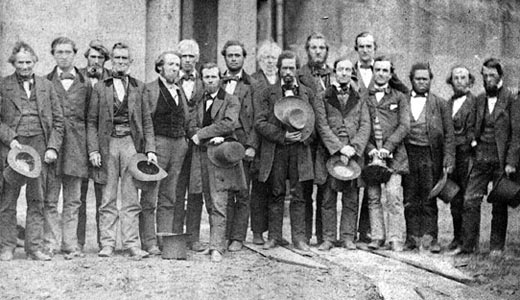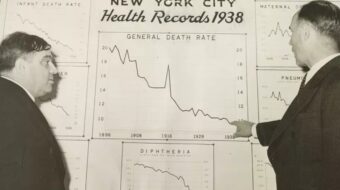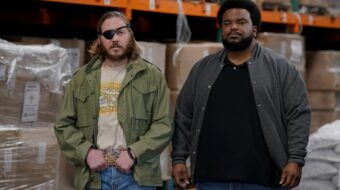
“The Abolitionists,” a three-part series on the revolutionary struggle to end chattel slavery in the American republic, is currently being broadcast on PBS television. It should be seen by as many viewers as possible and shown widely in public schools.
Parts One and Two aired Jan. 8 and 15, respectively, and final episode will be shown Jan. 22, in the PBS “American Experience” series. “The Abolitionists” can also be seen online.
Using historians as commentators, and actors portraying major figures like William Lloyd Garrison, Angelina Grimke, Frederick Douglass, Theodore Dwight Weld, and John Brown, the first episode tells the story of the abolitionist movement’s beginning at a time when “democracy in America” was associated with the slaveholder president Andrew Jackson. For Jackson, American democracy meant territorial expansion through the destruction of native peoples, conquest of Mexican lands and maintenance of slavery to “protect” the white “common man.”
Connecting the personal with the political, the episode follows a number of individuals to show how the movement development: Angelina Grimke, a daughter of Southern slaveholders, turned against the system that she initially saw as corrupting white slaveholders. An intellectual, William Lloyd Garrison, impelled by both the religious and secular spirit of the time to seek a more perfect society, became the voice and the pen of the movement. A slave, Frederick Douglass, came to fight back against the “slave breaker” brought in to beat him into submission. And the murder of Elijah Lovejoy, an abolitionist editor in Alton, Illinois, in 1837, inspired John Brown to dedicate his life to the destruction of slavery.
Viewers are also introduced to both the shifting forces and divisions among abolitionists over strategy and tactics. These are shown in the form of the “ultra-left” William Lloyd Garrison and the more politically astute Theodore Dwight Weld.
In one of the episode’s most powerful scenes, Weld marries Angelina Grimke in a ceremony where neither pledged obedience to each other, or to any state, or any church. It was a ceremony presided over by a white and a free black minister. As the wedding took place, a mob pelted the hall with rocks and the building was later burned down
In those times abolitionists were subjected to terrorist mob violence in their homes and meeting halls. Most of the political establishment condemned them as “enemies of freedom and democracy,” and some termed them foreign agents of the British Empire, which had earlier abolished slavery in its colonial possessions.
As it developed into an “antislavery vanguard,” as one historian called it, the abolitionist movement was subjected to the kind of repression which would be associated with the “Red Scares” of the post-Civil-War period. As an example of this, the first denunciations of “socialism” in the U.S. in Congress were made by slaveholder politicians who associated abolitionism, land reform, women’s rights, and other radical movements with “European Socialism.”
I have not yet seen the second part of the series. There are a few criticisms I would make of the first episode, which in no way detract from its overall excellence. First, it might have better begun with the Nat Turner rebellion as a force influencing all that followed. It might also have emphasized the role of free Blacks in the movement, which hopefully the series will do more of in the following episodes.
And it could have found some way to show what progressive historians have long shown – that the anti-abolitionist mobs were usually led by wealthy men, members of local elites, who saw the abolitionists as a threat to both general property rights and their ability to control poor whites.
The series would make a fine companion to Steven Spielberg’s contemporary big-budget film,”Lincoln,” which largely looks at the political struggle in Congress and the administration (at the top) during the Civil War, although it portrays old abolitionist political leaders, now as “Radical Republicans” with power in Congress, positively.
For those on the broad left, particularly those who have been part of or have fought side by side with the activists of the Communist Party USA, the abolitionist movement is our most important forebear. And, in its subsequent development of a broad anti-slavery coalition and its role in the creation of a broad anti-slavery party, the Republican party (not to be confused with what Republicans are today or have long been), a guide to what can be done today to advance people’s movements.
Watch Angelina Grimke Rebels on PBS. See more from American Experience.
The series is available on DVD for purchase ($19.99) and can also be downloaded via iTunes. Photo: When runaway slave John Price was arrested in Oberlin, Ohio, and transported to nearby Wellington in 1858, a group of abolitionists intervened to rescue him and eventually brought him to freedom in Canada. Via National Historical Society and PBS.












Comments